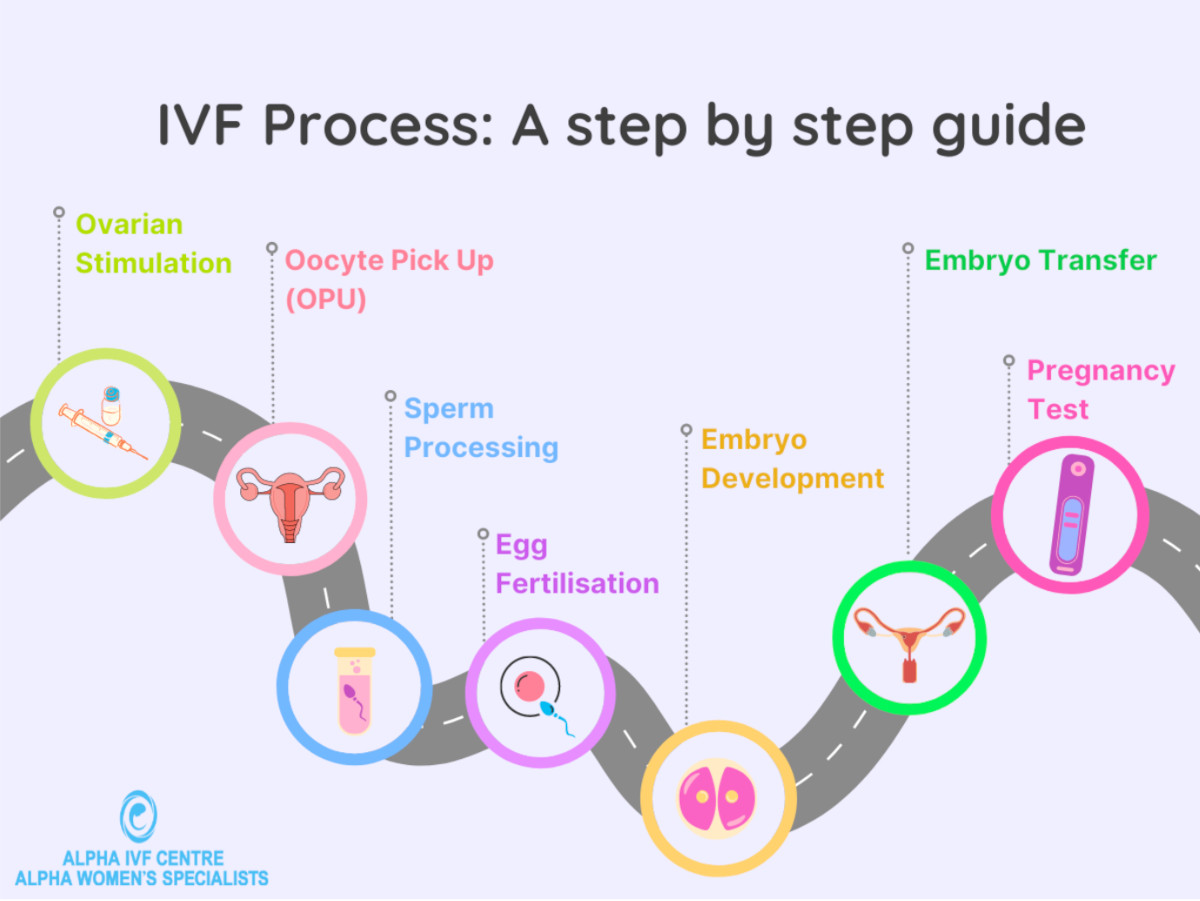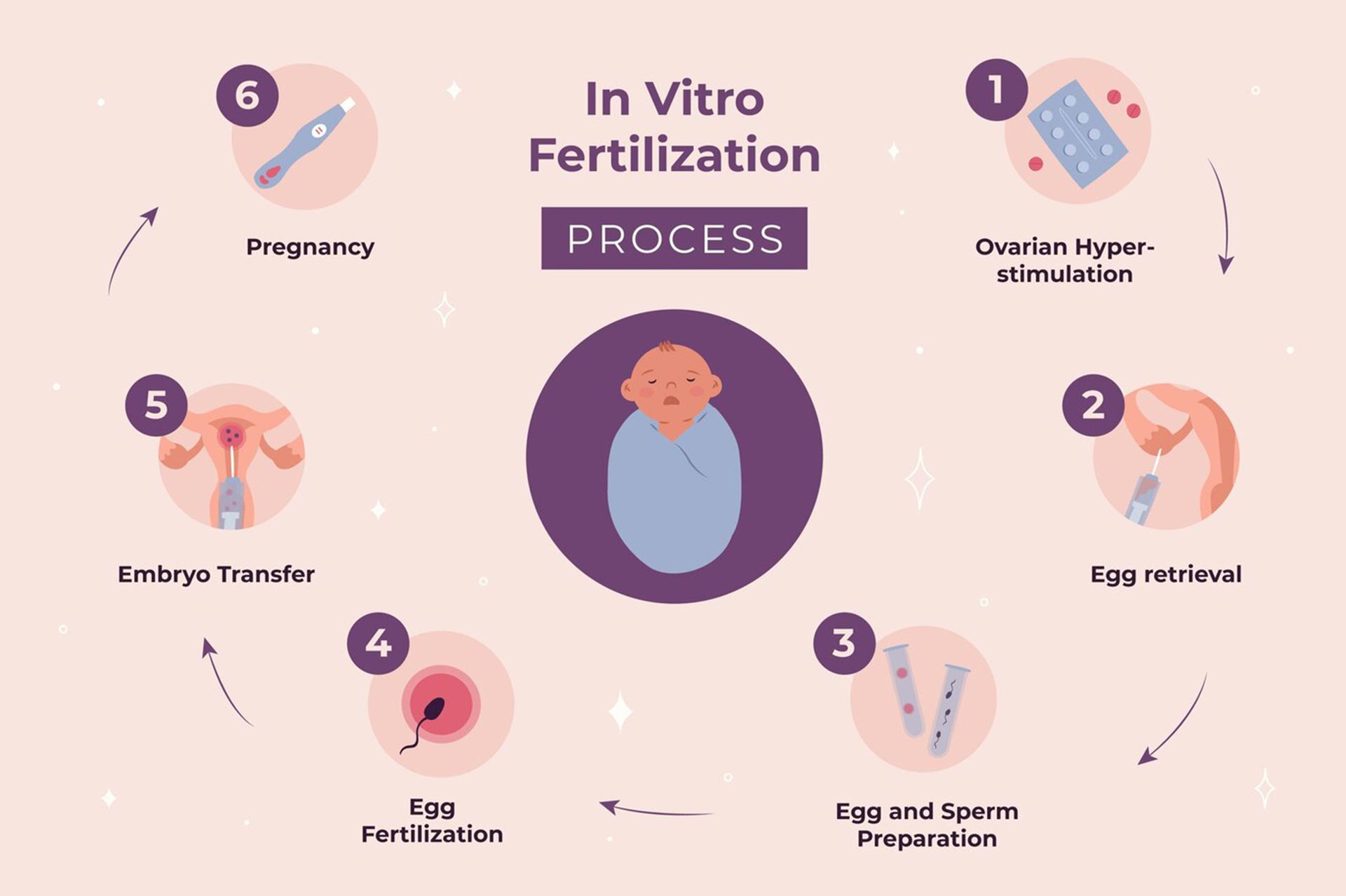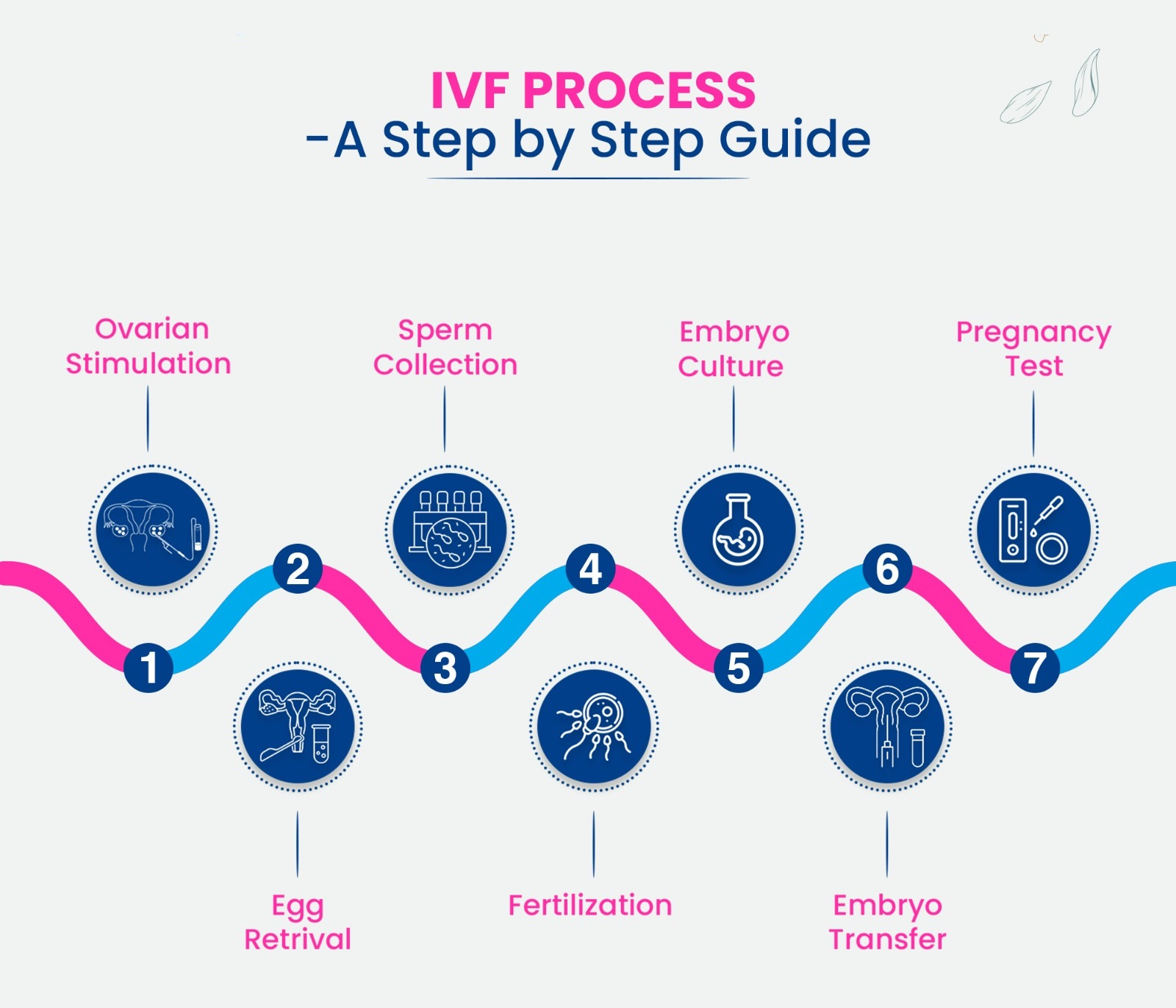How Long Is the IVF Process? Your Step-by-Step Guide to the Journey
Starting a family can feel like a big adventure, especially if you’re considering in vitro fertilization (IVF). If you’ve ever wondered, “How long does the IVF process take?” you’re not alone—it’s one of the first questions people ask when they dive into this world. The truth is, IVF isn’t a one-size-fits-all timeline. It’s a journey with twists, turns, and a few waiting periods that can stretch from a few weeks to several months, depending on your unique situation.
In this guide, we’ll walk you through every step of the IVF process, from the moment you decide to explore it to the day you take that all-important pregnancy test. We’ll break it down into bite-sized pieces, share some real-life insights, and sprinkle in the latest research to give you a clear picture. Whether you’re just curious or ready to take the plunge, this is your roadmap to understanding how long IVF really takes—and what you can do to make the ride smoother.

The Big Picture: What to Expect From Start to Finish
IVF is like planning a big trip—you’ve got prep work, the main event, and then the waiting to see if you’ve reached your destination. On average, the full IVF process, from your first doctor’s visit to finding out if you’re pregnant, takes about 2 to 4 months. But here’s the catch: that timeline can shift based on your body, your doctor’s plan, and even a little bit of luck.
Think of it in three phases:
- Prep Phase: Getting your body and mind ready (1-3 months).
- Active Cycle: The core IVF steps, like stimulating your ovaries and transferring an embryo (about 4-6 weeks).
- Waiting Game: The two-week wait to see if it worked (14 days).
Let’s dive into each part so you know exactly what’s coming—and how long each step might take.
Phase 1: Before the Cycle Begins—Setting the Stage
Before you even start injecting hormones or counting eggs, there’s some groundwork to lay. This prep phase can take anywhere from a few weeks to three months, depending on your health and how fast you move through the steps.
Initial Consultation and Testing (2-4 Weeks)
Your IVF journey kicks off with a visit to a fertility specialist. This isn’t just a quick chat—think of it as a deep dive into your reproductive health. The doctor will want to know everything: your medical history, any past pregnancies, and what’s been going on with your efforts to conceive.
Next comes the testing. For women, this might include:
- Blood tests to check hormone levels (like FSH and AMH) and ovarian reserve.
- An ultrasound to peek at your ovaries and uterus.
- Maybe even a hysterosalpingogram (HSG) to make sure your fallopian tubes aren’t blocked.
For men, it’s usually a semen analysis to check sperm count and quality. These tests can take a couple of weeks because labs need time to process results, and you might need to schedule them around your menstrual cycle.
Real Talk: Some clinics can fast-track this if you’ve already got recent test results. But if you’re starting from scratch, expect about 2-4 weeks here.
Preconception Health Tune-Up (1-3 Months)
Here’s something not every article talks about: your body needs to be in top shape for IVF to work its best. Doctors often recommend a 90-day preconception plan to boost your chances. Why 90 days? That’s how long it takes for eggs to mature and for sperm to refresh their quality.
What might this look like?
- Nutrition: Load up on fruits, veggies, and prenatal vitamins with folic acid.
- Lifestyle: Cut back on caffeine, quit smoking, and ease up on stress (easier said than done, right?).
- Medical Tweaks: If you’ve got thyroid issues or high blood sugar, your doctor might want to stabilize those first.
Pro Tip: A 2023 study from the Journal of Assisted Reproduction and Genetics found that women who optimized their diet and stress levels three months before IVF had a 15% higher success rate. So, this step isn’t just busywork—it’s a game-changer.
If you’re already in great health, you might skip straight to the cycle. But for most, this prep adds 1-3 months to the timeline.
Phase 2: The IVF Cycle—Where the Action Happens
Once you’re cleared to start, the active IVF cycle begins. This is the heart of the process, and it usually takes 4 to 6 weeks from the first injection to the embryo transfer. Here’s how it breaks down.
Step 1: Ovarian Stimulation (10-14 Days)
The goal here is to get your ovaries to produce multiple eggs instead of the usual one per month. You’ll start taking fertility drugs—usually injections—around day 2 or 3 of your period. These meds, like follicle-stimulating hormone (FSH), tell your ovaries, “Hey, let’s make a bunch of eggs!”
- How Long: 10-14 days, depending on how your body responds.
- What Happens: You’ll visit the clinic every few days for ultrasounds and blood tests to track egg growth. When the eggs are ready, you’ll get a “trigger shot” to ripen them up.
Fun Fact: Some people respond super fast (8 days), while others need a little longer (up to 16 days). Your doctor adjusts the plan based on your ovaries’ vibe.
Step 2: Egg Retrieval (1 Day)
Once your eggs are mature, it’s time to collect them. This is a quick procedure—about 20-30 minutes—done under light sedation. A thin needle goes through your vaginal wall to scoop up the eggs from your ovaries.
- How Long: The procedure itself is fast, but you’ll spend a half-day at the clinic for prep and recovery.
- Recovery: Most people feel crampy for a day or two after. Rest up, and you’re back to normal pretty quick.
Step 3: Fertilization and Embryo Growth (3-5 Days)
Your eggs head to the lab, where they meet the sperm (either your partner’s or a donor’s). If all goes well, fertilization happens, and the embryos start growing. The embryologist watches them for 3-5 days until they reach the blastocyst stage—think of it as the embryo’s “ready-to-move-in” phase.
- How Long: 3-5 days, depending on whether your doctor transfers on day 3 or day 5.
- Cool Twist: Some clinics freeze embryos here and transfer them later (more on that soon).
Step 4: Embryo Transfer (1 Day)
Now, one or two of those tiny embryos get placed into your uterus. It’s a simple procedure—no anesthesia needed—just a thin tube through your cervix. You might feel a little pressure, but it’s over in minutes.
- How Long: About 15-30 minutes, plus some rest time at the clinic.
- Aftercare: You’re usually good to go home right after, though some doctors suggest a chill day.
Total Cycle Time: From stimulation to transfer, you’re looking at 4-6 weeks. If you’re doing a fresh transfer (straight from retrieval to uterus), that’s the end of the active phase. But some folks opt for a frozen transfer, which adds a twist.
Phase 3: The Two-Week Wait—Holding Your Breath
After the transfer, you enter the infamous “two-week wait” (TWW). This is the 14-day stretch where you wait to see if the embryo implants and you’re pregnant. It’s short but feels like forever—kind of like waiting for your favorite show to drop a new season.
- What Happens: You might take progesterone (pills, shots, or suppositories) to help the embryo stick.
- How Long: Exactly 14 days until a blood test confirms pregnancy.
Interactive Moment: How Do You Pass the Two-Week Wait?
Take this mini-poll:
- ✔️ Binge-watch a series
- ✔️ Distract with a hobby
- ❌ Obsess over every twinge
- ❌ Test early with a home kit
Share your pick in your head—or with a friend—and see what keeps you sane!
Frozen Embryo Transfers: A Different Timeline
Not everyone does a fresh transfer. More and more people are freezing their embryos and transferring them later. Why? It can boost success rates and give your body a break after all those hormones. Here’s how it changes things:
- Freeze Time: Embryos can be frozen right after the 5-day growth period and stored for months or even years.
- Prep for Transfer: You’ll take meds (like estrogen and progesterone) to prep your uterus, which takes 2-4 weeks.
- Total Add-On: Adds about 1-2 months to the process if you pause between retrieval and transfer.
A 2024 study from the American Society for Reproductive Medicine found that frozen transfers now outpace fresh ones, with a 5-10% higher success rate in some cases. So, if your doctor suggests this, it might stretch your timeline but could be worth it.
What Can Stretch or Shrink the Timeline?
IVF isn’t a straight line—life loves to throw curveballs. Here’s what might tweak your timeline:
Speed-Ups
- Healthy Baseline: If you’re already in tip-top shape, you might skip the long prep.
- Fast Responders: Some ovaries churn out eggs in record time.
- Clinic Efficiency: A well-oiled clinic can move you through testing and cycles faster.
Slow-Downs
- Health Hiccups: Conditions like PCOS or endometriosis might need extra prep.
- Cycle Cancellations: If your body doesn’t respond to meds, you might need a redo.
- Multiple Rounds: Only about 30-40% of first cycles work, per the CDC. Another round adds 4-6 weeks.
Case Study: Meet Sarah, a 32-year-old who sailed through prep in a month and finished her first cycle in 6 weeks—pregnant on the first try. Then there’s Mike and Jen, who needed three months of prep for Jen’s thyroid and two cycles (10 weeks total) before success. Everyone’s story is different.

Emotional Timeline: The Part No One Talks About Enough
The clock isn’t just ticking on your body—it’s ticking on your heart, too. IVF can feel like an emotional rollercoaster, and that’s a timeline all its own.
- Hopeful Highs: The excitement of starting and seeing eggs grow.
- Anxious Lows: Waiting for test results or the TWW.
- Unexpected Pauses: If a cycle fails, the emotional reset can take weeks or months.
Fresh Insight: A 2025 survey by Fertility Network found that 70% of IVF patients wished they’d planned for emotional downtime. So, build in buffer days—treat yourself to a spa day or a good book. It’s not just about the physical steps; it’s about staying whole through it all.

How Long Until You’re Pregnant? Success Rates and Rounds
Here’s the million-dollar question: how long until IVF works? The truth is, it might take one cycle—or it might take a few. Let’s look at the numbers:
| Age Group | Success Rate (Live Birth per Cycle) | Average Cycles Needed |
|---|---|---|
| Under 35 | 45-50% | 1-2 |
| 35-37 | 32-40% | 2-3 |
| 38-40 | 20-25% | 3-4 |
| Over 40 | 5-10% | 4+ |
Source: CDC, 2023 National ART Surveillance
If you’re under 35, you might be holding a positive test in 2-3 months. Over 40? It could be 6 months or more with multiple tries. Patience is key—and so is a solid support system.
Practical Tips to Navigate the IVF Timeline
Want to make this journey smoother? Here’s your cheat sheet:
- Ask Up Front: At your first visit, ask, “What’s my personal timeline?” Every case is unique.
- Batch Your Tests: Schedule bloodwork and ultrasounds together to save time.
- Prep Early: Start that 90-day health kick before your consult—it’s never too soon.
- Freeze Smart: Consider freezing embryos if you’re on the fence about timing.
- Lean On Support: Join an IVF group (online or in-person) to swap timeline tips.
Checklist: Your IVF Prep Essentials
- ✔️ Prenatal vitamins
- ✔️ Water bottle (stay hydrated!)
- ✔️ Comfy clothes for clinic visits
- ❌ Stress (okay, try to ditch it)
The Latest Buzz: What’s New in IVF Timing?
IVF isn’t stuck in the past—new tricks are popping up to tweak the timeline. Trending on X and fresh from 2025 research:
- Portable Ultrasounds: Some clinics are testing handheld devices to monitor eggs at home, cutting clinic visits.
- AI Predictions: Algorithms can now guess how fast your ovaries will respond, shaving days off planning.
- Natural Cycle IVF: Skipping heavy meds for a lighter, 3-week process—less common but gaining fans.
These aren’t everywhere yet, but they hint at a future where IVF might get faster and easier. Keep an eye out!




